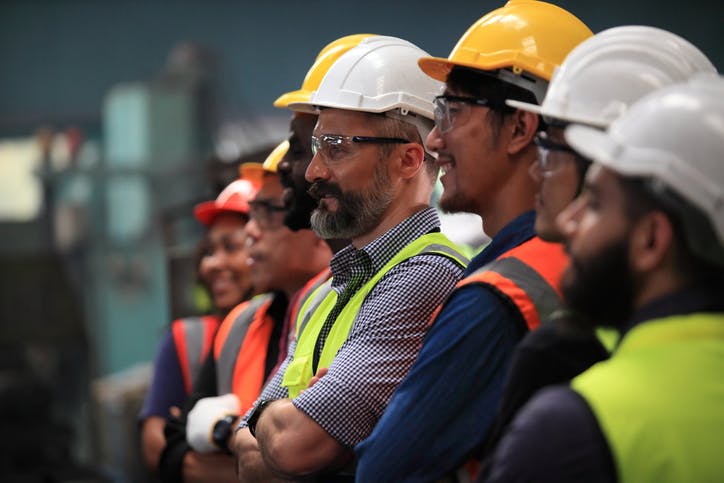In the ever-evolving digital landscape, Fiber-to-the-Home (FTTH) technology has emerged as a game-changer, revolutionizing internet connectivity across Europe. Deepomatic analyzed the latest FTTH/B Market Panorama by the FTTH Council and highlights the key takeaways and opportunities in the region. Let’s delve into the findings for a short list of countries and explore the technology that can help telecommunications companies stay on track with their objectives.
France and Spain stay at the top of the subscriber volume leaderboard, with the United Kingdom showing impressive growth.
The European take-up rate, measuring the percentage of households subscribing to FTTH services out of the total number of homes passed, has shown a positive trajectory. Over the last year, the total number of homes passed in EU27+UK increased by 13.9% (year-on-year evolution), reaching 60% of total homes passed (7.2% more than last year).
France and Spain remain the leading countries in terms of the number of subscribers, with 20.6 million and 14.5 million, respectively. Plus, both countries' penetration rates grew, 10.9% in France and 5.9% in Spain. Beyond this data, their take-up rates remain impressively high, at 78% and 86%, respectively. If we focus on France, we see that it remains the leading country in subscribers and on year-on-year market growth, with 3.4 million new subscribers. Contrary to last year, Spain doesn't figure as the second fastest growing market, this time it is the UK that takes the spot with 1.8 million.
These latter figures reveal that fiber optic has become a widely adopted broadband technology for French and Spanish consumers, and that the UK is experiencing significant growth. This is why offering an exemplary experience to these consumers on the network is a top priority in those very competitive markets.
First takeaway:
Whatever the country, quality control is seen as one of the most significant issues in constructing fiber optic networks and connecting subscribers. Deepomatic accompanies operators in charge of connecting subscribers and applying their quality standards at scale and in an automated way. How? By placing real-time quality control software directly in the hands of field employees working for network operators and their subcontractors. Photos of works carried out on equipment – street cabinets, building entry points, or termination points – in consumers' homes are analyzed by AI algorithms. Then, field employees are provided with live feedback about the conformity of their work. This eliminates undetected and uncorrected anomalies and reduces the risk of service interruptions. Bouygues Telecom, SFR and Vodafone are part of the internet service providers implementing the technology in France and Spain and have witnessed significant benefits from using computer vision in fiber connection operations.
Homes passed acceleration in the United Kingdom, Germany and Belgium
Although Germany, Belgium, and the United Kingdom started later than their French and Spanish counterparts, they have nevertheless accelerated their pace of FTTx deployment.
The United Kingdom reached almost five new million homes passed between September 2022 and September 2023. Part of this unprecedented rise can be attributed to the PIA model (Physical Access Infrastructure), whereby AltNets can build their network leveraging the existing infrastructure of the incumbent wholesale operator Openreach. This has undoubtedly increased the velocity of the roll-out of fiber. However, as stated in the report, there is still much work to be done in the country to increase fiber coverage (57%) and subscribers (only 5.5 million subscribers vs 17.1 million homes passed).
Despite a moderate coverage rate of 28.3%, Belgium keeps accelerating fiber roll-out. 43% more homes were passed compared to last year, making it the country with the most significant growth.
Germany saw a big expansion in the last year, especially regarding homes passed. However, with the consequent size of the country, they currently only reach 40% in coverage rate, 25% take-up rate, and 10% penetration rate. Strategic partnerships are also being established in the country to accelerate the roll-out, like last year's Vodafone and Altice collaboration. Approximately 80% of the network deployment will focus on areas where Vodafone is already operating through cable, and 20% will cover the neighboring residences of these areas.
Second takeaway:
The more stakeholders involved in the deployment, the more difficult it is to ensure high-quality documentation. Telecom operators increase their operations' First Time Right rate by applying AI to the documentation of fiber build works and automating their quality control process. This enables them to avoid repeat visits and meet their fiber roll-out deadlines. Eventually, this allows them to be on track with their deployment calendar and their time to revenue. Read more about the benefits of First-Time Right Automation in fiber roll-out.
The future of Europe’s fiber-optic networks is bright, and the time to embrace this technology-driven revolution is now. By integrating AI-powered quality control, businesses can unlock the full potential of FTTH, optimize operations, and deliver exceptional customer experiences.
Read the full report of the FTTH Council.
*numbers of subscribers out of the total number of households





